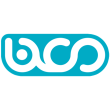Table of Content
INTRODUCTION TO THE INAUGURAL EDITION
Target audience
Reading and learning outcomes
Unique feature of this book
What to expect in the full-edition of EOMM?
Outline
PREFACE BY PHILIP KOTLER
1.ESSENTIALS OF MODERN MARKETING MANAGEMENT
1.1 Definitions, Tasks and Scope of Marketing
1.2 Company Orientation towards the Marketplace
1.3 The Role of Marketing in the Company
1.4 Fundamentals of Marketing Planning
1.5 The Main Stages in Developing a Marketing Plan
2. SITUATIONAL ANALYSIS IN THE MARKETING PLANNING PROCESS
2.1 Marketing Research
2.1.1 Definition of marketing research
2.1.2 Categories of Research
2.1.3 Secondary Research
2.1.4 Primary Research
2.2 Assessing the Internal Marketing Situation
2.2.1 Market Orientation View (MOV)
2.2.2 Resource Based View (RSV)
2.2.3 Major Sources of Competitive Advantage
2.3 Assessing the External Marketing Situation
2.3.1 PEST Analysis
2.3.2 External Relationships to Stakeholders in the Value Net
2.4 Analysing Buying Behaviour in the B2C Market
2.5 Analysing Buying Behaviour in the 828 Market
2.6 SWOT Analysis
2.6.1 Elements of a SWOT Analysis
2.6.2 Matching and Converging in the SWOT Matrix
2.6.3 Application of the SWOT Analysis
3.STRATEGY FORMULATION IN THE MARKETING PLANNING PROCESS
3.1 Strategic Marketing Planning
3.1.1 Vision and Mission Statement.
3.1.2 Strategic Objectives
3.1.3 Estimation of the Planning Gap and Problem Diagnosis
3.1.4 The Search for Strategy Alternatives for Closing Planning Gap
3.1.5 Ansoff’s Generic Strategies for Growth
3.1.6 Porter's Generic Strategies
3.1.7 The BCG Portfolio Matrix Model
3.1.8 The GE-Matrix Multi factor Portfolio Matrix
3.2 Market Segmentation , Targeting and Positioning
3.2.1 The Underlying Premises of Market Segmentation
3.2.2 The Segmentation, Targeting and Positioning Approach
3.2.3 Segmenting Consumer Markets (B2C)
3.2.4 Segmenting the Business Markets (B2B)
3.2.5 Target Marketing
4. MARKETING MIX IN THE MARKETING PLANNING PROCESS
4.1 Product and Service Decisions
4.1.1 Different Product Levels
4.1.2 Product Line Decisions
4.1.3 Product Mix Decisions
4.1.4 Services Marketing
4.1.5 New Product Development (NPD)
4.1.6 The Product Life Cycle
4.1.7 Branding
4.2 Pricing Decisions
4.2.1 A Pricing Framework
4.2.2 General Pricing Approaches
4.2.3 Pricing new Products
4.2.4 Price Bundling
4.3 Distribution Decisions
4.3.1 Types of Distribution Channel
4.3.2 Strategies for Market Coverage
4.3.3 Vertical Integration in the Distribution Channel.
4.3.4 Multichannel Distribution Systems
4.3.5 Marketing Logistics and Supply Chain Management.
4.3.6 Logistics Value Chain
4.4 Communication Decisions
4.4.1 Key Opinion Leader Management.
4.4.2 The Promotional Mix
4.4.3 Advertising
4.4.4 Sales Promotion
4.4.5 Public Relations
4.4.6 Sponsorship
4.4.7 Digital and Social Media Marketing
4.4.8 Direct Marketing
4.4.9 Personal Selling
5.IMPLEMENTATIONAND CONTROLLING IN THE MARKETING PLAN PROCESS
5.1 Organizing and Implementing the Marketing Plan
5.1.1 The Process of Developing the International Marketing Plan
5.1.2 Deciding on the International Marketing Mix
5.1.3 Writing the Marketing Plan Document.
5.1.4 Implementing the Marketing Plan
5.1.5 Deciding on the Marketing Organization
5.2 Budgeting and Control
5.2.1 Marketing Productivity and Economic Results
5.2.2 Marketing Budgeting
5.2.3 Controlling the Marketing Programme
6.EXTERNAL ORIENTATION OF STRATEGIC MARKETING PLAN
6.1 The decisive impact of a customer-centric culture and the vital role played by marketing leaders
6.2 Market Orientation as a Culture that Focuses on the Customer
6.3 A Customer Culture is Necessary to Implement the Marketing Plan
6.3.1 What is a Customer Culture?
6.3.2 How Can We Make Customer Culture Tangible and Actionable?
6.4 Tying the 5 Externally Oriented Practices to the Marketing Plan
6.4.1 The Customer Insight Discipline
6.4.2 The Customer Foresight Discipline
6.4.3 The Competitor Insight Discipline
6.4.4 The Competitor Foresight Discipline
6.4.5 The Peripheral Vision Discipline
6.4.6 The Empowerment Discipline
6.4.7 The Cross-Functional Collaboration Discipline
6.4.8 The Strategic Alignment Discipline
6.5 How Do these 8 disciplines Drive Business performance?
6.6 How Can We Measure our Level of Customer Culture?
6.7 What Do High Performers and Low Performers Look Like?
7.DISRUPTIVE DIGITAL MARKETING STRATEGIES
7.1 Harnessing the digital opportunity
7.2 Disruption as a mindset
7.3 Business to Consumer vs. Business to Mass
7.4 Alpha, a generation of creators
7.5 Going global through digital marketing
7.6 Cross-cultural content
7.7 7 Differentiate in the post-pandemic market
7.8 The need for a digital marketing strategy
7.9 Enhancing offline promotion
8.THE RISE OF Al-DRIVEN METAHUMANS
8.1 The Manufacturing of the ''All-American" Breakfast
8.1.1 From Reality to Hyper-Reality
8.2 Superhuman Al: Foundation Models
8.2.1 Al Foundation Models
8.2.2 The limits of Foundation Models
8.2.3 Embedded Metahuman Recommenders: eCommerce
8.3 The Rise of Al-Driven Metahumans
8.3.1 Creating a human face
8.3.2 Fully Digital Metahumans
8.3.3 Digital Humans in the Workplace
8.3.4 A Metahuman Metaverse
8.4 Transhumanism, the next step?
8.4.1 Brain-Computer Interfaces
8.4.2 Genetic Engineering
8.4.3 A New Ideology
8.5 A Path to Human-Centered Al
8.5.1 Common-sense Principles
9.LEADING BY INNOVATION & DESIGN : STRATEGIES AND VALUE CREATION
9.1 Micro and Macro Impact of Design
9.2 Building an Innovative Enterprise: The Vision of Innovation
9.2.1 The Vision of Innovation
9.2.2 The Vision : Supporting the strategic innovation planning process
9.2.3 Defining the "Results" and managing Innovation planning
9.2.4 Innovation Capability Maturity Model :Design and assessment Framework
9.2.5 The potential approach to establishing lnnovation
9.2.6 The timing of innovative outputs
9.3 Building an Innovation Conducive Culture
9.3.1 Culture and Innovation
9.3.2 Innovation Models
9.3.3 Evolution of Innovation Models
9.3.4 The Culture Canvas
9.3.5 The Source of lnnovation
9.3.6 The adoption of innovation
9.3.7 Socio-cultural determinants of innovation
9.4 Design and Innovation: The future trends
9.4.1 Design to leverage on user-producers interaction
9.4.2 Design for disruption
9.4.3 User centred and Human factored design
9.5 The emergence of Design Economy
10.DESIGNING VALUE
10.1 Design creates value
10.2 The HCD process
10.2.1 Best practices for innovation
10.2.2 Hear phase
10.2.3 Create Phase
10.2.4 What is the value of design?
10.3 The four mantras of good design
10.4 We Design perceived Value
10.4.1 What does it mean to understand the customer?
10.5 The Mental Model
10.5.1 First dimension of perception: functional.
10.5.2 Second dimension of perception: economic
10.5.3 Third dimension of perception: emotional
10.5.4 Fourth dimension of perception: aspirational
10.6 Differentiation/relevance matrix
10.6.1 The route to value
10.6.2 Starting the journey
10.7 7 Key findings about Good Design
11.REMODELLING THE MARKETING RESEARCH
11.1 Need for Marketing Research
11.1.1 Without research, there is no way out!
11.2 Purpose of Marketing Research
11.3 Research Process
11.3.1 Research Purpose , Objectives and Rationale
11.3.2 Research Design
11.3.3 Sampling Plan
11.3.4 Data Collection
11.3.5 Data Processing and Analysis
11.3.6 Research Report and Presentation
11.3.7 Quality Assurance and Ethical Considerations
11.4 Sources of Information
11.5 Qualitative Research
11.5.1 Types of Qualitative Research
11.6 Quantitative Research
11.6.1 Questionnaire Design
11.7 7 Informed Consent
11.8 Criteria for Good Research
11.9 Writing Research Proposal
12.BETTER WORLD THROUGH SOCIALPRENEURSHIP
12.1 The core of Socialpreneurship
12.1.1 Managing Socialpreneurship Programs
12.2 Pre-pandemic Business Outlook
12.3 Mutable Consumer Behaviour in Pre-pandemic World
12.4 The Socialpreneurship Guide to Sustainable Businesses
12.5 The Way Forward for Businesses
13. ADAPTIVE PUBLIC P OLICY AND MARKETING DURING COVID-19
13.1 A Polysemic Perspective on the Labelling of Pandemics
13.2 Managing Collective Self-Esteem
13.2.1 Mismanaging Collective Self-Esteem
13.3 Rehumanization: Endnote
14. MARKETERS WITHOUT BORDERS
14.1 Marketers without Borders
14.1.1 Issues to be Resolved
14.1.2 Conclusion
14.2 After Covid, Will There be a New Normal?
14.2.1 The "Old Normal"
14.2.2 There are Many New Normals
14.2.3 Conclusion
14.4 EmPower Us!
14.5 The Consumer in the Age of Coronavirus
14.5.1 Capitalism's Dependence on Endless Consuming
14.5.2 The Growing Number of Anti-Consumerists
14.5.3 How Businesses Sustain the Consumer Sentiment.
14.5.4 Capitalism Faces the COVID-19 Crisis
14.6 Managing the Economy's Return to Normal
14.6.1 Reopening the Economy
14.6.2 Developments
14.6.3 How Long Will It Take For a Full Recovery
14.6.4 Conclusion
14.7 One Group - Business Leaders - Can Help Save the Nation
14.7.1 Business Leaders
14.7.2 What can a Company Gain by Supporting Better Societal Conditions?
14.7.3 Conclusion
14.8 Future of Marketing
14.8.1 The Post COVID Scenarios
14.8.2 How Business will look in Post COVID World
14.8.3 How Consumer will look in Post COVID World
14.8.4 How Business will look in Post COVID World
14.8.5 How Digital Marketing will look in Post COVID World
14.8.6 How Social Marketing will look in Post COVID World
14.8.7 How Advertising will look in Post COVID World
14.8.8 How Branding will look in Post COVID World
15. CONCLUSION
REFERENCES



